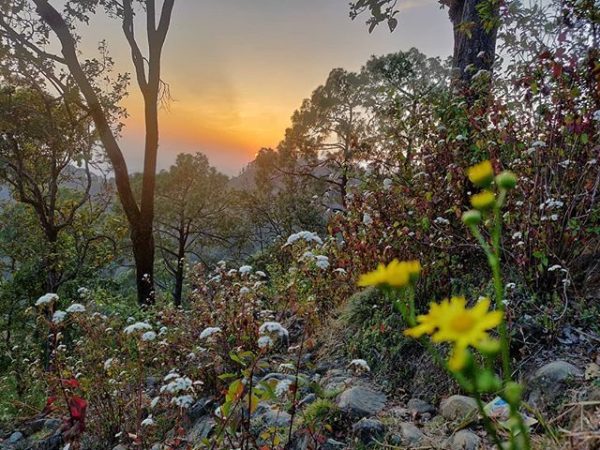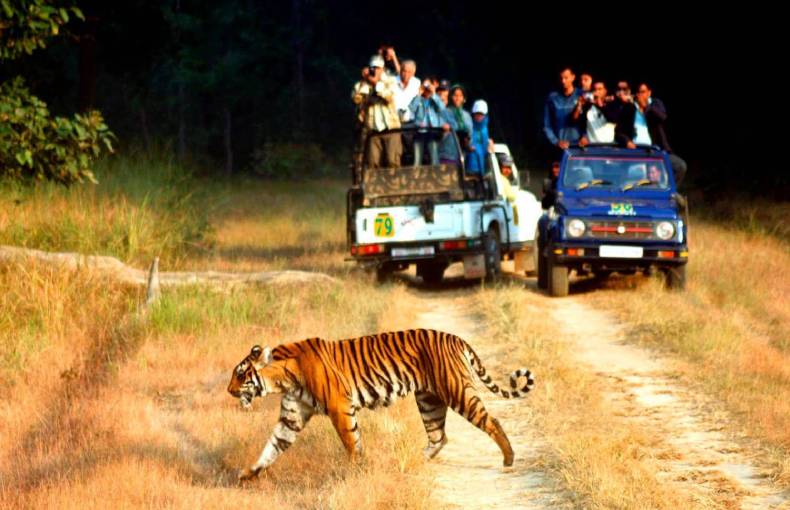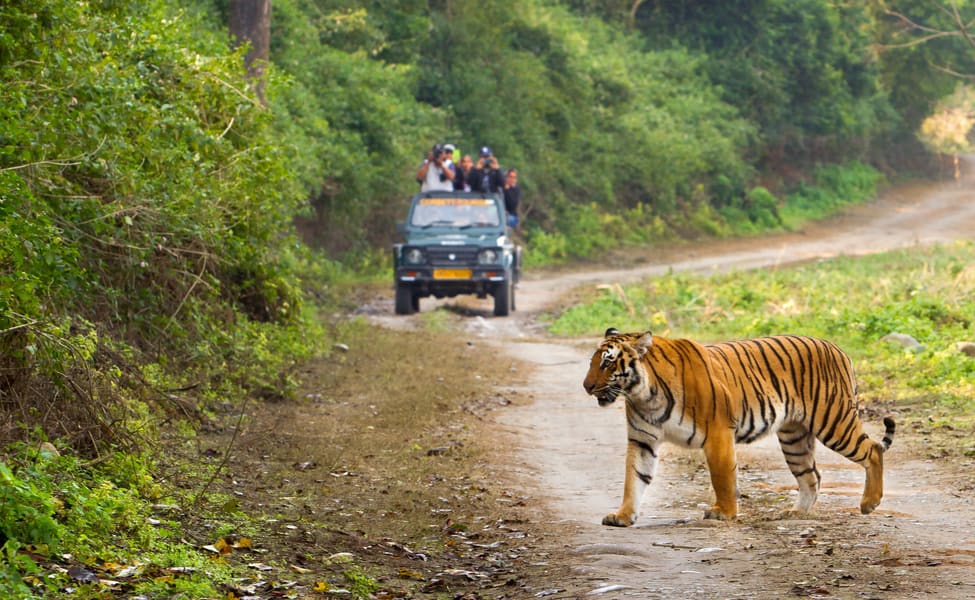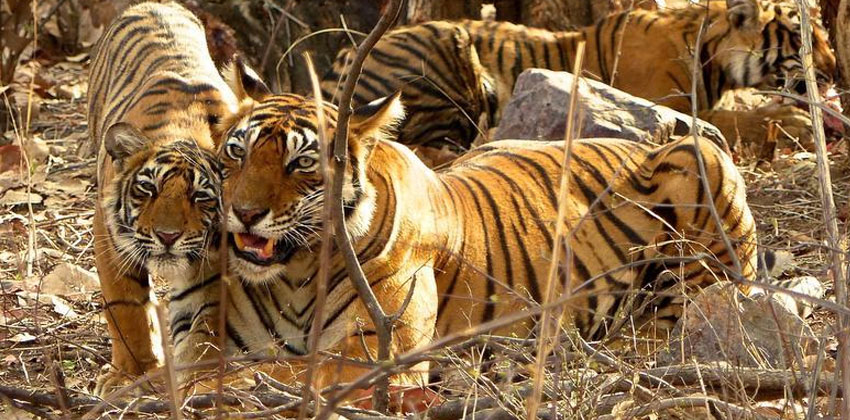Flora Diversity found in Jim Corbett
Jim Corbett National Park, nestled in the picturesque landscapes of Uttarakhand, India, is not just renowned for its majestic wildlife but also boasts a stunning array of flora diversity. The park’s extensive floral variety adds to its allure, making it a paradise for nature enthusiasts and botanists alike. From dense Sal forests to vibrant blooming flowers, let’s embark on a journey to explore the captivating flora that adorns this enchanting wilderness.
Exploring the Rich Flora Diversity of Jim Corbett National Park
Sal Forests (Shorea robusta):
The iconic Sal forests are dominating Jim Corbett National Park. These deciduous forests, with their towering Sal trees, create a dense canopy that provides shelter to numerous wildlife species. The Sal tree is one of the most economically and ecologically important species, offering timber, resin, and other essential products to local communities and sustaining a wide range of forest-dependent creatures.

Bali Flower (Semecarpus anacardium):
The Bali Flower, also known as the Bhilwa or Marking Nut Tree, is another prominent species in the park. It is a large deciduous tree with dark green leaves and distinctive fruits, known for its medicinal properties. The Bali Flower’s seeds are used in Ayurvedic medicine as well as have significant cultural importance in traditional practices.

Kusum Flower (Schleichera oleosa):
The Kusum tree is a medium-sized deciduous tree found throughout the park. Its small, fragrant, and pale yellow flowers bloom during the summer months. The Kusum fruit contains oil-rich seeds used for producing biofuels and in various cosmetic applications.

Mahua Flower (Madhuca longifolia):
The Mahua tree is well-known for its sweet-scented flowers, which bloom in abundance during March and April. These flowers have a crucial role in supporting the local ecosystem, attracting pollinators like bees and butterflies. The Mahua tree holds cultural significance, and its flowers are used to make a traditional alcoholic beverage enjoyed by tribal communities.

Ardisia solanacea:
Ardisia solanacea, commonly known as Coral Berry or Red-Berry Coffee, is a small evergreen shrub found abundantly in Jim Corbett National Park. It features glossy leaves and clusters of bright red berries that add vibrancy to the landscape. Birds are particularly fond of these berries, contributing to seed diffusion and aiding in the regeneration of this plant species.

Semal (Bombax ceiba):
The Semal, also known as the Silk Cotton Tree, is a magnificent deciduous tree that enhances the beauty of the landscapes of Jim Corbett National Park. During the spring season, the tree bursts into a riot of colors with large red flowers all over its branches. These flowers attract various pollinators, and the birds use these cotton-like fibers to build nests.
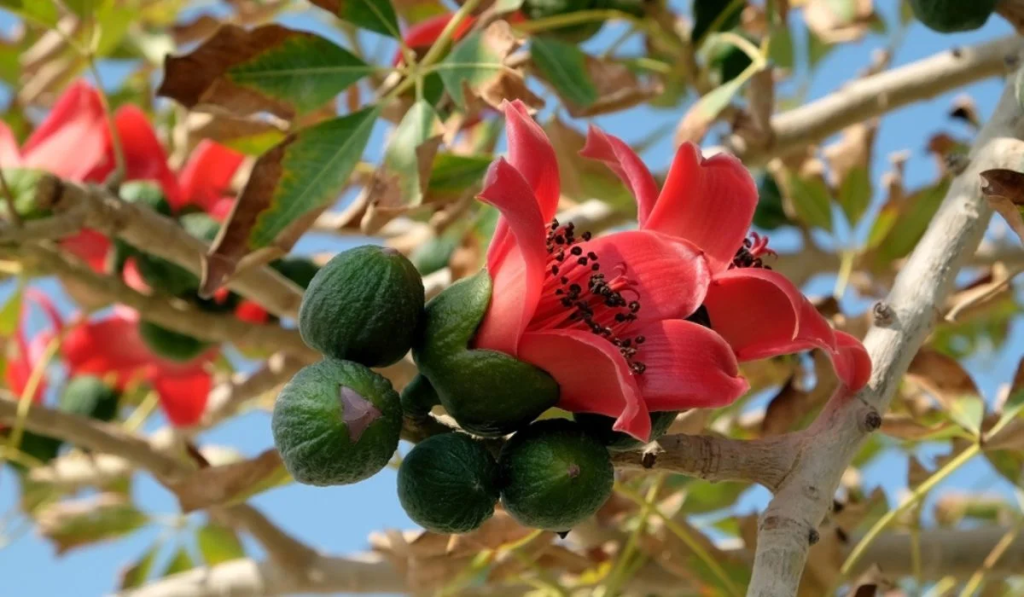
Champak (Magnolia champaca):
The Champak tree is an evergreen species known for its enchanting fragrance and vibrant yellow flowers. The delightful scent of Champak flowers perfumes the air, making it a favorite among many visitors. In addition to its aromatic appeal, the tree holds cultural and religious significance in various traditions.

Dhak (Butea monosperma):
The Dhak or Palash tree, also called Flame of the Forest, is a sight to behold during the early summer months. Its striking orange-red flowers create a spectacular visual display against the green backdrop of the forest. Dhak flowers are aesthetically pleasing and have medicinal properties and are used in traditional medicine.

Amla (Emblica officinalis):
The Amla tree, also known as Indian Gooseberry, is a small to medium-sized deciduous tree with light green leaves and round, light green fruits. Amla is valued for its rich Vitamin C content and various medicinal properties. The fruits of these trees are utilized in Ayurvedic medicine and are an integral part of traditional Indian cuisine.
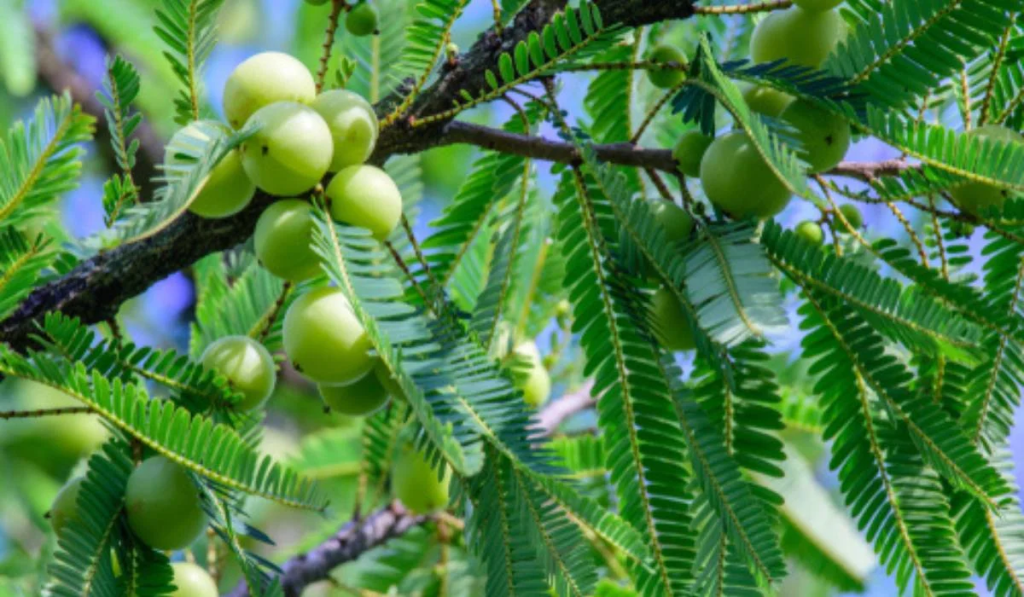
Kachnar (Bauhinia variegata):
The Kachnar tree is a flowering tree that graces the park with its delicate, orchid-like flowers. These pink and white blooms add a touch of elegance to the park’s scenery. In addition to its aesthetic appeal, Kachnar is used in traditional medicine for its therapeutic properties.

Bakul (Mimusops elengi):
The Bakul tree is a medium-sized evergreen species with sweetly scented, cream-colored flowers. The pleasant fragrance of Bakul flowers fills the air during the blooming season, making it a popular choice for ornamental purposes and religious ceremonies.
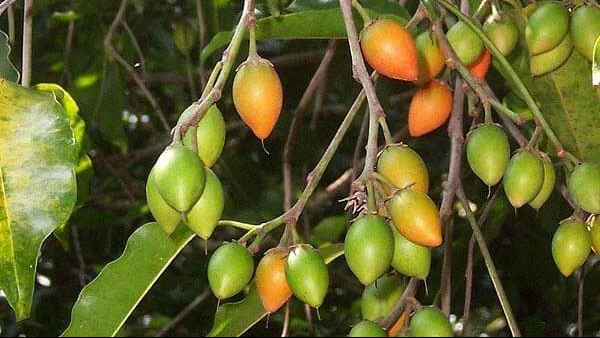
Gurhal (Hibiscus rosa-sinensis):
The vibrant Gurhal, also known as Hibiscus, adorns the park with its striking red, yellow, and orange flowers. These attractive blossoms have multiple uses, including medicinal and cosmetic applications. Hibiscus tea, made from flowers, is well-known for its health benefits.

Adusa (Justicia adhatoda):
The Adusa plant, commonly known as Vasaka or Malabar Nut, is a shrub with medicinal properties. Its leaves are used in Ayurvedic and traditional medicine to treat respiratory ailments. Adusa is a vital component of several herbal remedies, making it an essential plant in the park’s medicinal flora.

Parijat (Nyctanthes arbor-tristis):
The Parijat tree or the Night-flowering Jasmine, is a small, deciduous tree with fragrant white flowers. These flowers bloom at night and shed during the day, giving them a unique charm. Parijat is often associated with love stories and mythological tales, adding to its cultural significance.
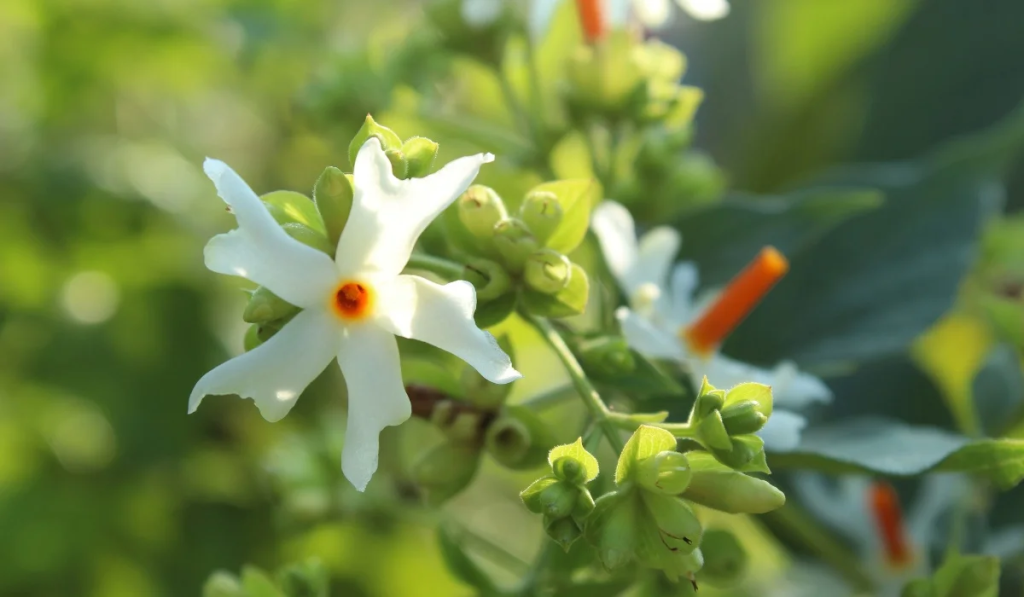
Conservation and Protection:
The diverse flora of Jim Corbett National Park plays a vital role in maintaining the delicate balance of its ecosystem. The park authorities and conservationists work tirelessly to protect and preserve these natural treasures, as the loss of any species could have cascading effects on the entire ecosystem.
Visitors to the park are encouraged to follow responsible tourism practices, such as refraining from plucking flowers or disturbing plant life to preserve this precious biodiversity. Appreciating the beauty of Jim Corbett National Park’s flora from a distance fosters a sustainable and harmonious coexistence with nature. The floral diversity of Jim Corbett National Park is a captivating tapestry of colors, scents, and ecological importance. From the majestic Sal forests to the delicate blooms of Parijat and Kachnar, each plant species contributes to the park’s ecological balance and enhances its natural beauty. As visitors, let us cherish and respect this botanical wonderland, ensuring its conservation for generations to come. The rich flora of Jim Corbett National Park serves as a reminder of the delicate interplay between humans and nature, urging us to be responsible stewards of the environment.

